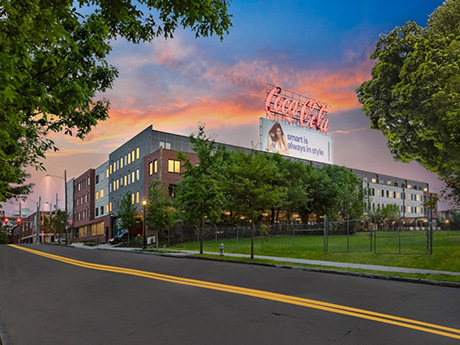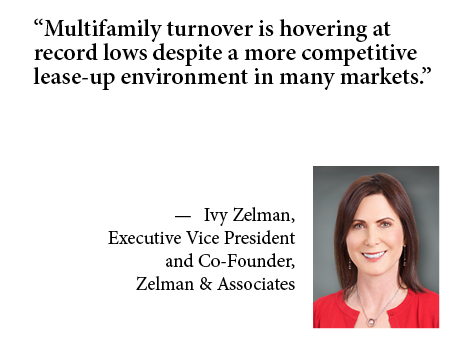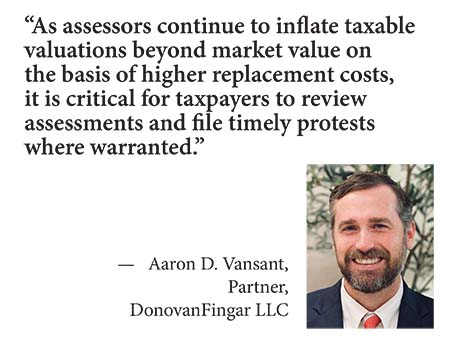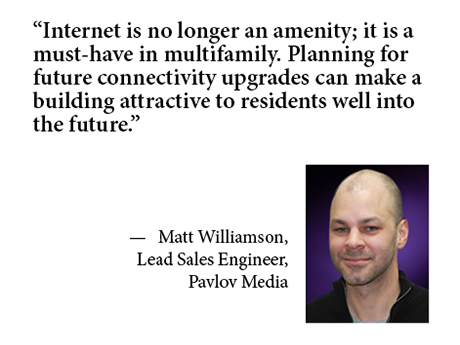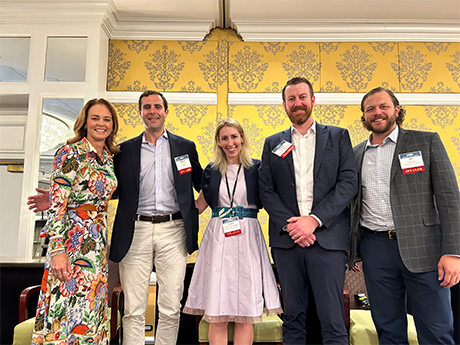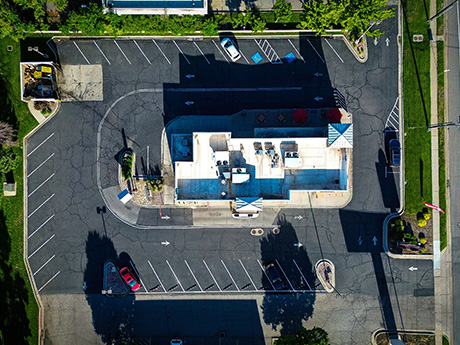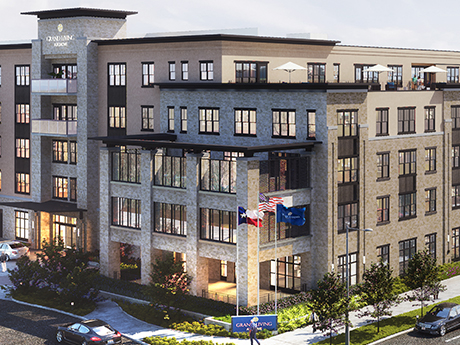— By Lynn Peisner — Developers and owners are optimistic a slowdown in construction over the next two years will help boost occupancies and rents by cutting into the market-rate supply overhang. This may be good news for owners of existing assets, but it’s less than ideal for those who make a living in the construction business. Or so it would seem. Most construction leaders are unfazed by an impending drought in new development. Some firms say they will rely on other sectors of commercial building to sustain them through the lull in apartment projects. Overall, the consensus among builders is that multifamily remains a secure line of business due to the high cost of owning a single-family home and a shortage of affordable housing. Construction Companies Adapt The National Association of Home Builders (NAHB) expects multifamily starts this year to total 342,000, down 28 percent from 2023. The recent peak was in 2022 when construction starts totaled 547,000. In its U.S. Real Estate Market Outlook 2024, CBRE concluded that this decline in construction starts means that new deliveries annually will be reduced to less than half the current level by 2026. “The pace of multifamily construction starts has slowed this …
Features
DevelopmentFeaturesHeartland Feature ArchiveMidwestMultifamilyMultifamily & Affordable Housing Feature Archive
By Derrick Barker, founder and CEO, Nectar Many founders and CEOs in commercial real estate have seen their fair share of market cycles. Analyzing today’s affordable housing crisis within the current multifamily rental market lends itself to sharing personal insights and most importantly, discussing how we can address these challenges head-on. A Cautionary Tale from 2013 Consider this personal story as anecdotal evidence. In 2013, this writer, a private investor at the time, acquired an apartment complex in Austell, Georgia, a suburb of Atlanta. It was a prime investment: cash-flowing and competitively priced due to it being a buyer’s market. For a while, we were the crown jewel of the submarket, which gave us a competitive advantage when leasing. But the tide turned quickly. Neighboring properties that were previously underperforming sold at discounts. New owners used their cost savings to renovate and undercut our rental rates. Suddenly, our competitive edge vanished, and we found ourselves with overpriced, outdated units. This experience imparted a crucial lesson: In real estate, you must always be prepared for market shifts — because the market ALWAYS shifts. Fast forward to today, and we’re seeing some eerily familiar patterns in the following areas: The Developer’s Dilemma …
For more than seven months in 2024, the commercial real estate investment market remained on a sluggish path. High interest rates continued to not only challenge many asset owners who needed refinancing, but also buyers and sellers looking to make deals. For instance, some $174.7 billion in property investment sales during the first half of the year was 7 percent below a year earlier, according to MSCI Real Assets. In such uncertain times, it’s not unusual for the commercial real estate market to experience bouts of bifurcation. Typically, those are marked by trends such as rising demand for higher quality offices during economic slumps when tenants can fetch discounted rents. Early in the recovery phase, it’s not unusual for investment to flow into tech-oriented metros at the expense of other cities. The Federal Reserve’s aggressive hike of the federal funds rate has created another category of bifurcation, especially as it relates to floating-rate bridge debt and how lenders are managing their loan portfolios. That is, the difference between the performance of assets depending on when owners financed the properties, says Jeff Salladin, a managing director with Dallas-based private debt fund Revere Capital. “It’s a question of vintage,” he explains. “Loans …
Content PartnerDevelopmentFeaturesLeasing ActivityLoansMidwestMultifamilyNortheastSoutheastTexasWalker & DunlopWestern
Multifamily Markets See Silver Lining Despite Economic Headwinds
Like other property sectors, rental housing assets have experienced big swings in fortunes over the past few years. Historically high rent growth during the pandemic came to a halt amid new supply in many markets. And the end of cheap debt has stymied investment sales and is stressing investors who paid handsomely for apartments using short-term financing. But the situation could be worse. Housing remains in high demand, and despite higher mortgage rates and a collapse in home sales, a severe lack of inventory on the market continues to prop up home values and price out would-be buyers. In May, home prices across the country increased 5.9 percent over the previous year, according to the latest S&P CoreLogic Case Shiller U.S. National Home Price NSA Index. Rental housing owners and operators are the obvious beneficiary of those challenges, says Ivy Zelman, executive vice president and co-founder of Zelman & Associates, a Walker & Dunlop company that provides housing research, analysis and consulting. Move-outs attributed to home purchases clearly illustrate the trend. An apartment and single-family rental operator in Phoenix recently told Zelman that such move-out activity has dropped to about 13 percent from an historical average of 30 percent, she …
Despite the Federal Reserve’s wishful thinking in 2021, inflation has persisted to create an inflationary environment not seen in 40 years. While investors welcome recent cooling trends, the Fed has yet to achieve its 2 percent annual inflation target. For landlords, tenants and other commercial taxpayers, it’s unsurprising that many tax assessors have increased property tax values in response to inflation. In many jurisdictions, taxable property values have surged regardless of property type or actual market demand. Taxpayers should not accept higher tax assessments without scrutiny, however. Instead, they should review their assessments to ensure the assessor has considered all factors influencing the property’s value. Here are several trends for taxpayers to consider when reviewing property tax assessments and preparing to protest inflated valuations: Cost vs. value Many assessment officials use the cost approach in mass appraisals of real property for ad valorem tax purposes. Without careful application — including proper classification of improvements, adjustments for depreciation and obsolescence and land adjustments for size and shape differences — the cost approach can lead to assessments inconsistent with a jurisdiction’s market value standard. While construction costs generally rise over time, some increases may only be temporary. For example, during the COVID-19 …
Content PartnerDevelopmentFeaturesLeasing ActivityMidwestMultifamilyNortheastPavlov MediaSoutheastTexasWestern
Cost-Effective Strategies, Future-Proofing for Multifamily Internet Infrastructure
In the rapidly evolving landscape of multifamily technology, owners and operators face a critical challenge to staying competitive. As demand for high-speed internet and robust connectivity grows, it is essential to adapt quickly. However, constantly upgrading infrastructure can be prohibitively expensive and time-consuming. The solution lies in future-proofing properties — building an adaptable infrastructure that can support unknown future technological needs. “Future-proofing is a matter of having infrastructure capable of supporting what we don’t know we will want later,” says Matt Williamson, lead sales engineer at Pavlov Media, which provides Wi-Fi, fiber-optic internet service and managed digital services to multifamily properties. Future-proofing involves implementing scalable and flexible communication systems that accommodate both current and emerging digital demands. By focusing on future-proofing, multifamily properties can meet residents’ increasing expectations for high-speed internet and comprehensive Wi-Fi coverage while also reducing operational costs and enhancing overall efficiency. Balance Current Needs with Future Trends “Multifamily residents now expect extremely high-speed internet connections in their units and throughout the entire property, including common areas like gyms, conference rooms, pools and walking paths,” Williamson says. Residents want robust internet connections for activities such as streaming, video calls and remote home monitoring. The importance of upload speeds …
Conference CoverageFeaturesMultifamilyNorth CarolinaSouth CarolinaSoutheastSoutheast Feature Archive
Multifamily Investors Need to Capitalize on ‘Golden Window’ to Buy Below Replacement Cost, Say InterFace Panelists
by John Nelson
The method to buy below replacement cost is a tried-and-true investment strategy among real estate investors that allows them to capitalize on short-term fluctuations in the market in order to lock in long-term value. Grant Russell, director of investments at AvalonBay Communities Inc., said that multifamily investors today are in a “golden window” because they can acquire a Class A property for less than what it costs to develop the same community from the ground-up, all things being held equal. “Deals are trading for higher than yesterday’s costs and below today’s costs; these are win-win transactions,” added Russell. “If a developer capitalized the deal a few years ago then they’re selling for a profit, and the buyer is able to acquire these deals for below today’s costs.” These win-win deals are becoming few and far between in today’s environment of elevated interest rates. While buyers are seeking strong yields in their investments, sellers are seeking profitability, and the middle ground has become narrower as those two motivations don’t overlap as often, especially compared to 24 to 36 months ago when interest rates were at historic lows. “In 2021-2022, properties were trading like commodities to some extent — they were two-year …
By Taylor Williams Within the world of multifamily development, the “amenities arms race” has become a well-documented trend over the past decade, a contest to curate and deliver the most appealing combination of entertainment and wellness features and activities to woo prospective renters. In many instances, this approach was successful, and developers succeeded in capturing the hearts and wallets of renters who sought an “everything under one roof” approach to renting. The fervent movement to deliver more extensive and impressive amenity packages also worked for much of the last decade because interest rates were dirt cheap, even though costs of materials and labor needed to install these features were perpetually on the rise. But today’s market is different. Developers not only face stubbornly high construction costs, but also significantly higher interest rates. Spreads on construction loans in particular tend to be higher than on permanent loans simply because this phase of the project life cycle carries the most risk. Unlike with other asset classes such as retail and industrial, where preleasing is often a prerequisite to securing construction debt, it’s exceedingly rare for renters to commit to units that are still two-plus years away from being delivered. The absence of …
AcquisitionsContent PartnerDevelopmentFeaturesIndustrialLeasing ActivityLee & AssociatesLoansMidwestMultifamilyNortheastOfficeRetailSoutheastTexasWestern
Lee & Associates Second Quarter Report: Industrial, Office Market See Continued Challenges While Retail, Multifamily Trends Follow Region-Specific Patterns
In the first half of 2024, high interest rates led to decreased demand, higher vacancy rates, reduced construction starts and lower property sales in industrial and office, according to Lee & Associates’ 2024 Q2 North America Market Report. Meanwhile, retail saw minimal development and continued low vacancies. Retail rent growth was particularly strong in the South and Southwest. Finally, high demand for multifamily, coupled with a sudden influx of supply in the second quarter of the year, has created a market where outcomes are highly tied to region. Midwest and Northeast multifamily markets have remained stronger than their counterparts in the South and Southwest, while Western markets saw mixed growth. Lee & Associates has made their full market report available here (with complete breakdowns of cap rates by city, market rents, vacancy rates, square footage information and more). The summaries for the industrial, office, retail and multifamily sectors below provide detailed insight into the trends and trajectories likely through the end of 2024. Industrial Overview: Activity, Growth Checked by High Interest Rates Industrial market performance across North America continued to downshift in the first half of this year. Although net absorption remains positive, demand for industrial space has fallen to the lowest levels …
By Jane Adler Post-pandemic, senior living owners and operators are rightfully focused on regaining occupancy and stabilizing their assets. Expansion opportunities have mostly been limited to acquisitions of troubled properties purchased at a discount. Inflation, relatively high interest rates, a tight labor market and even tighter capital markets have largely sidelined ground-up development. But contrarian players believe now is the right time to build. Much of the existing stock of seniors housing is 20-plus years old, and baby boomers are just over the horizon. A development that breaks ground today will be ready to welcome the first wave of boomers who turn 80 in two years. New projects will face less competition too because of today’s difficult development environment. “This is the perfect time to put a shovel in the ground,” says Anders Pesavento, senior vice president of capital markets at Ryan Cos. The Minneapolis-based development and investment firm has four seniors housing projects slated to break ground this year that are valued at approximately $385 million. The lack of new supply and strong demand supports the case for building now, emphasizes Pesavento. “We believe we will be rewarded.” The volume of seniors housing units under construction is at …



